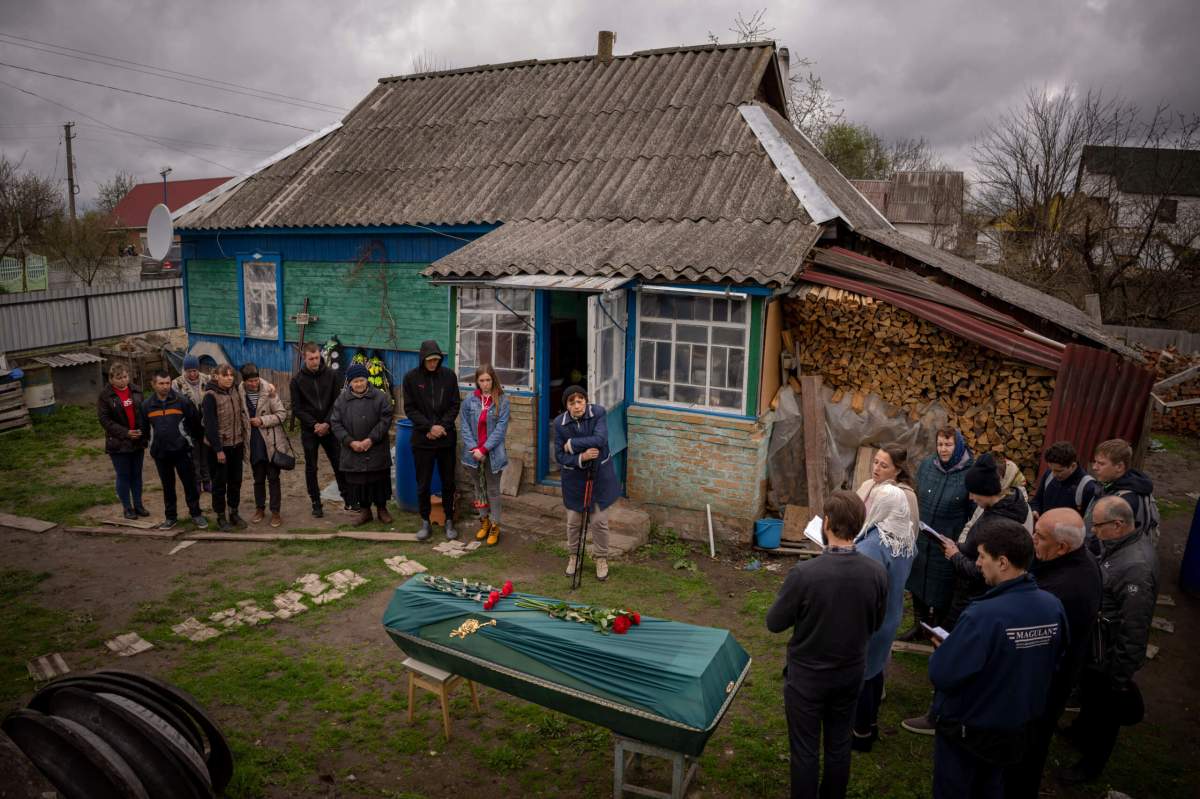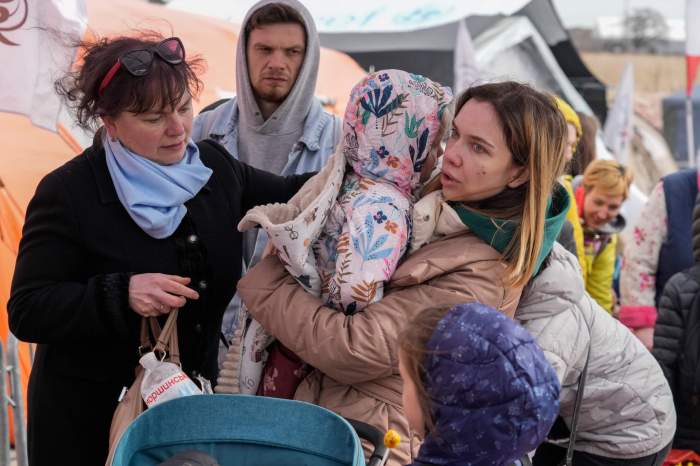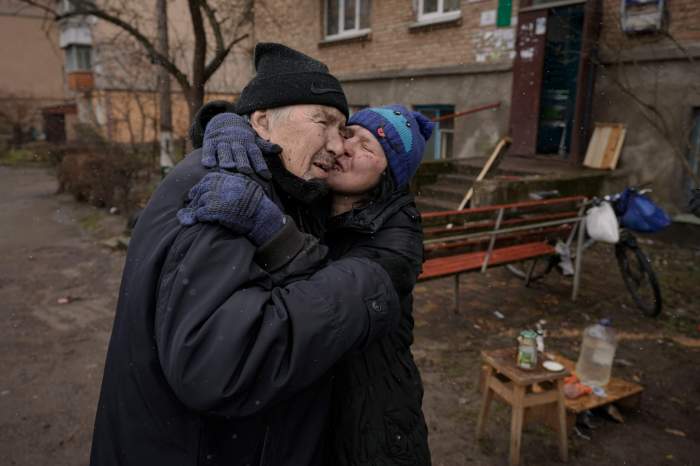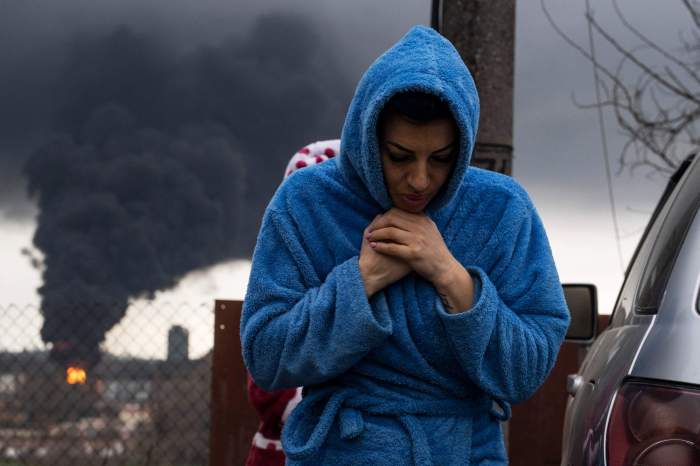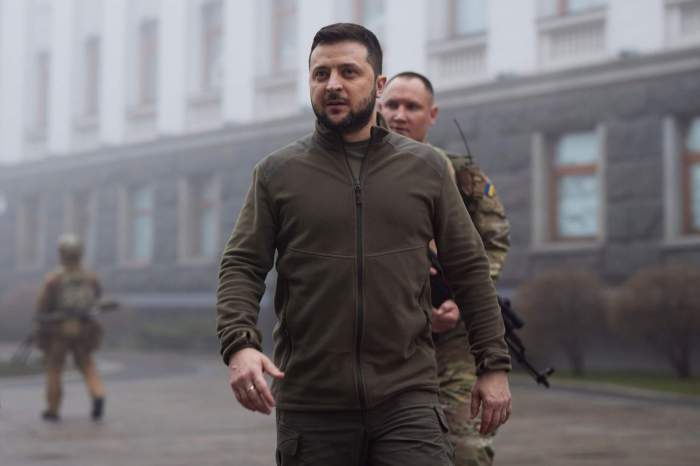Russia pounded eastern and southern Ukraine on Tuesday as the U.S. promised to “keep moving heaven and earth” to get Kyiv the weapons it needs to repel the new offensive, despite Moscow’s warnings that such support could trigger a wider war.
For the second day in a row, explosions rocked the separatist region of Trans-Dniester in neighboring Moldova, knocking out two powerful radio antennas close to the Ukrainian border and further heightening fears of a broader conflict erupting across Europe. No one claimed responsibility for the attacks, but Ukraine all but blamed Russia.
Russian missile fire also knocked out a strategic railroad bridge along a route that links southern Ukraine’s Odesa port region to neighboring Romania, a NATO member, Ukrainian authorities said.
The attack on the bridge — along with a series of strikes on key railroad stations a day earlier — appears to mark a major shift in Russia’s approach. Up to now, Moscow has spared strategic bridges, perhaps in hopes of keeping them for its own use in seizing Ukraine. But now it seems to be trying to thwart Ukraine’s efforts to move troops and supplies.
Southern Ukraine and Moldova have been on edge since a senior Russian military officer said last week that the Kremlin’s goal is to secure not just eastern Ukraine but the entire south, so as to open the way to Trans-Dniester.
Two months into the devastating war, Western arms have helped Ukraine stall Russia’s invasion, but the country’s leaders have said they need more support fast.
U.S. Defense Secretary Lloyd Austin said that more help is on the way as he convened a meeting of officials from around 40 countries at the U.S. air base at Ramstein, Germany, to pledge more weapons.
“This gathering reflects the galvanized world,” Austin said in his opening remarks. He added that he wanted officials to leave the meeting “with a common and transparent understanding of Ukraine’s near-term security requirements because we’re going to keep moving heaven and earth so that we can meet them.”
After unexpectedly fierce resistance by Ukrainian forces thwarted Russia’s attempt to take Ukraine’s capital early in the war, Moscow now says its focus is the capture of the Donbas, the mostly Russian-speaking industrial region in eastern Ukraine.
In the small city of Toretsk in the Donbas, residents are struggling to survive, collecting rainwater for washing up and fervently hoping for an end to the fighting.
“It’s bad. Very bad. Hopeless,” said Andriy Cheromushkin. “You feel so helpless that you don’t know what you should do or shouldn’t do. Because if you want to do something, you need some money, and there is no money now.”
In its latest assessment of the fighting, the British Defense Ministry reported Russian advances and heavy fighting in the Donbas, with one town, Kreminna, apparently falling after days of street-by-street fighting.
In the gutted southern port city of Mariupol, authorities said Russian forces hit the Azovstal steel plant with 35 airstrikes over the past 24 hours. The plant is the last known stronghold of Ukrainian fighters in the city. About 1,000 civilians were said to be taking shelter there with an estimated 2,000 Ukrainian defenders.
“Russia has drastically intensified strikes over the past 24 hours and is using heavy bunker bombs,” said Petro Andryushchenko, an adviser to Mariupol’s mayor. “The number of those wounded will be clear once the rubble is cleared.”
He also accused Russian forces of shelling a route it had offered as an escape corridor from the steel mill.
Beyond Mariupol, local officials said at least nine people were killed and several more wounded in Russian attacks on towns and cities in eastern and southern Ukraine. Pavlo Kyrylenko, governor of the Donetsk region of the Donbas, said on the Telegram messaging app that Russian forces “continue to deliberately fire at civilians and to destroy critical infrastructure.”
Ukraine’s military also said Russian forces shelled Kharkiv, the country’s second-largest city, which lies in the northeast, outside the Donbas, but is seen as key to Russia’s apparent bid to encircle Ukrainian troops in the Donbas from the north, east and south.
In the south, Ukrainian forces struck back in the Kherson region, while Oleksandr Kamyshin, head of the state-run Ukrainian Railways, said there were no injuries in the Russian attack on the railroad bridge in the Odesa region.
It was not clear who was behind the blasts in Trans-Dniester, but the U.S. has repeatedly warned that Russian forces could launch “false-flag” operations to create a pretext for invading other countries. About 1,500 Russian troops are based in Trans-Dniester, a long, narrow strip of land with about 470,000 people along the Ukrainian border.
Ukraine hinted that the attacks there were carried out by Russia. Separatist authorities in Trans-Dniester blamed Ukraine for the explosions.
With the potentially pivotal battle for the east underway, the U.S. and its NATO allies are scrambling to deliver artillery and other heavy weaponry in time to make a difference.
German Defense Minister Christine Lambrecht said her government will provide Gepard self-propelled armored anti-aircraft guns to Ukraine. German Chancellor Olaf Scholz has faced mounting pressure to send heavy weapons such as tanks and other armored vehicles.
Austin noted that more than 30 allies and partners have joined the U.S. in sending military aid to Ukraine and that more than $5 billion worth of equipment has been committed.
A senior Kremlin official, Nikolai Patrushev, warned that “the policies of the West and the Kyiv regime controlled by it would only be the breakup of Ukraine into several states.”
Diplomatic efforts to end the fighting also continued. U.N. Secretary-General António Guterres met Russian Foreign Minister Sergey Lavrov and called again for a cease-fire. The U.N. chief was scheduled to meet Russian President Vladimir Putin later in the day.
But Lavrov warned that if the Western flow of weapons continues, the talks aimed at ending the fighting will not produce any results.
A day earlier, Lavrov accused NATO of “pouring oil on the fire” with its support for Ukraine. He also warned against provoking World War III and said the threat of a nuclear conflict “should not be underestimated.”
“A nuclear war cannot be won and it shouldn’t be fought,” Pentagon spokesman John Kirby responded in an interview with CNN. “That kind of rhetoric is clearly not called for in the current scenario. What is called for is Mr. Putin ending this war.”



